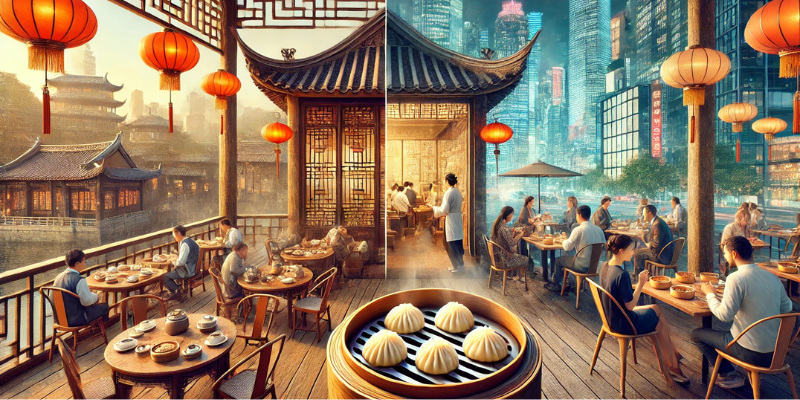Dim sum, a beloved Cantonese culinary tradition, has a rich history that dates back centuries. From its origins in Chinese tea houses to its rise as a global phenomenon, dim sum has evolved while maintaining its deep cultural significance. Let's explore the fascinating journey of dim sum and how it became a worldwide favorite.
Origins: Tea Houses and the Birth of Dim Sum
The history of dim sum is closely tied to Yum Cha, or the tradition of drinking tea. During the Tang Dynasty (618–907 AD), tea houses along the Silk Road served travelers and merchants looking for rest and refreshments. Over time, these tea houses began offering small snacks to accompany the tea, giving birth to what we now know as dim sum.
By the time of the Song Dynasty (960–1279 AD), dim sum had become an integral part of tea culture in southern China, particularly in Guangdong (Canton). Cantonese chefs further refined and expanded the variety of dim sum dishes, creating the extensive menu we see today.
The Evolution of Dim Sum
During the Ming (1368–1644 AD) and Qing (1644–1912 AD) Dynasties, dim sum became a social dining experience, with families and friends gathering at tea houses for morning or afternoon meals. The tradition of "one pot of tea, two pieces of dim sum" became common, emphasizing both the simplicity and sophistication of the cuisine.
By the 19th and early 20th centuries, Cantonese immigrants brought dim sum to Hong Kong, where it flourished and became an essential part of daily life. The bustling dai pai dongs (street stalls) and cha lau (tea houses) of Hong Kong perfected the art of dim sum, making it an iconic part of the city's food culture.
Dim Sum Goes Global
With Chinese migration, dim sum expanded beyond Asia. In the late 19th and early 20th centuries, Chinese immigrants introduced dim sum to the United States, Canada, Australia, and the United Kingdom. Cities like San Francisco, Vancouver, London, and Sydney developed thriving dim sum scenes, with traditional and modern adaptations catering to local tastes.
By the 21st century, dim sum had evolved from a humble tea house snack into a global dining trend. Today, Michelin-starred restaurants, food trucks, and fusion eateries worldwide serve dim sum with innovative twists, incorporating international flavors and techniques.
Modern-Day Dim Sum: Tradition Meets Innovation
While traditional dim sum such as har gow (shrimp dumplings), siu mai (pork dumplings), and char siu bao (BBQ pork buns) remain popular, contemporary chefs are pushing the boundaries with new flavors and presentation styles. Some modern innovations include:
• Truffle and Wagyu Dim Sum: Adding luxury ingredients to classic recipes.
• Vegan and Gluten-Free Dim Sum: Catering to modern dietary preferences.
• Fusion Dim Sum: Blending global flavors like kimchi, cheese, and even foie gras.
Dim sum has come a long way from its humble beginnings in ancient Chinese tea houses. Today, it is a global phenomenon that continues to evolve while staying true to its roots. Whether you enjoy dim sum in a bustling Hong Kong tea house or at a modern fusion restaurant, the experience remains a celebration of shared meals, flavors, and traditions.
What’s your favorite dim sum dish? Share your thoughts in the comments below!

Comments
Submit